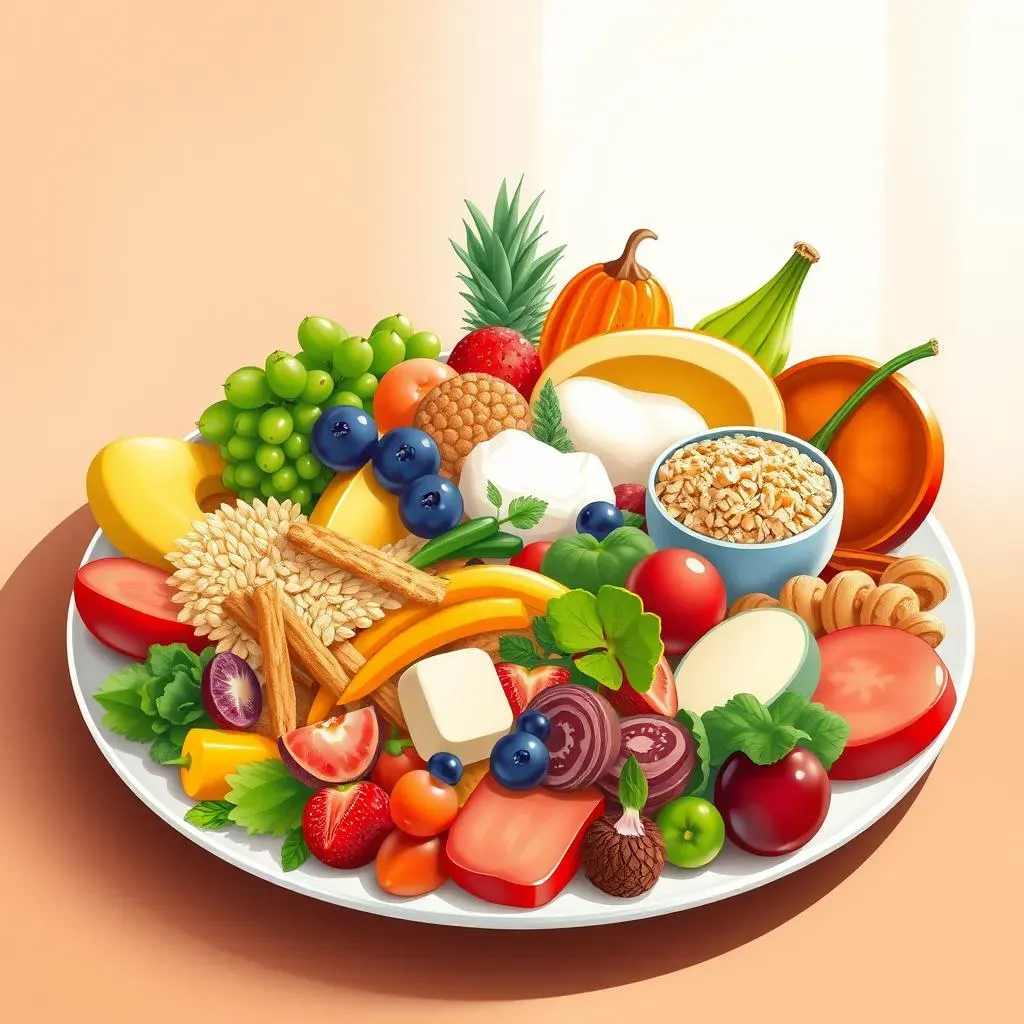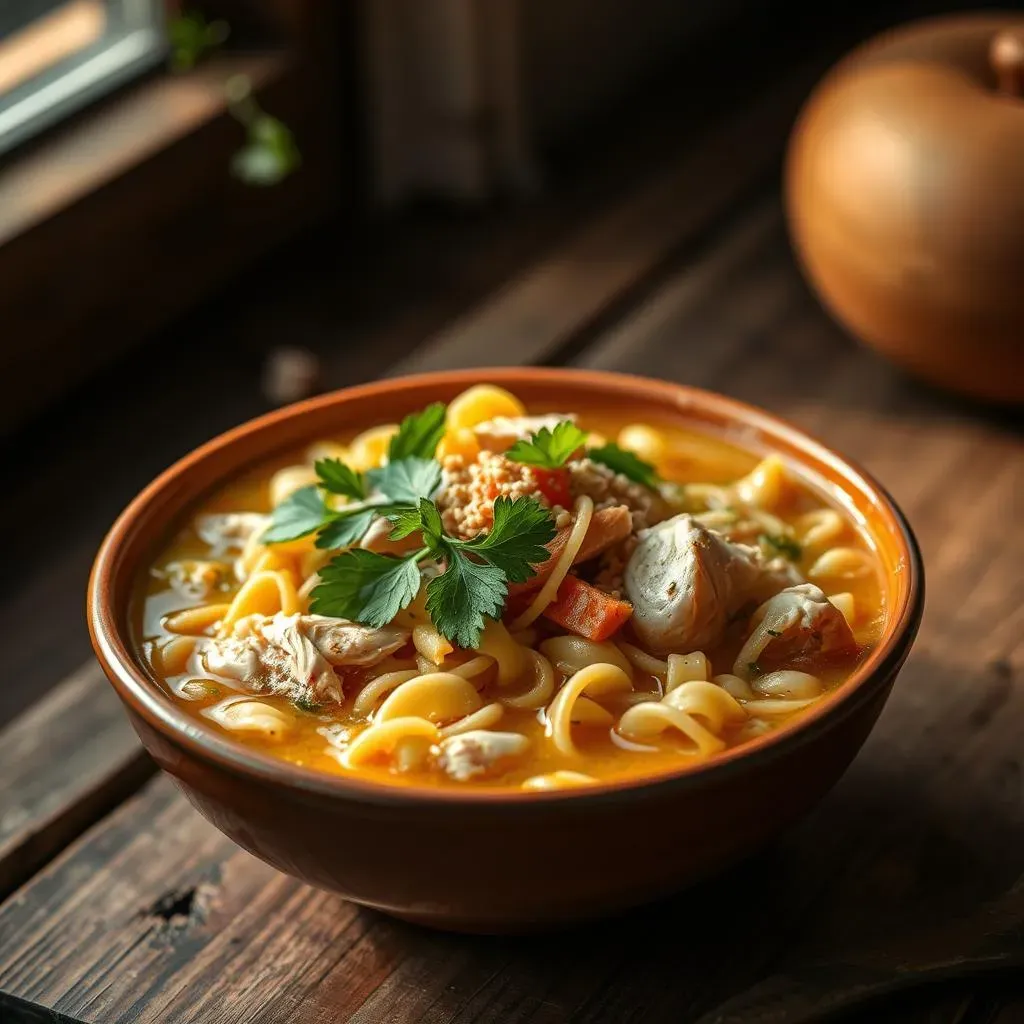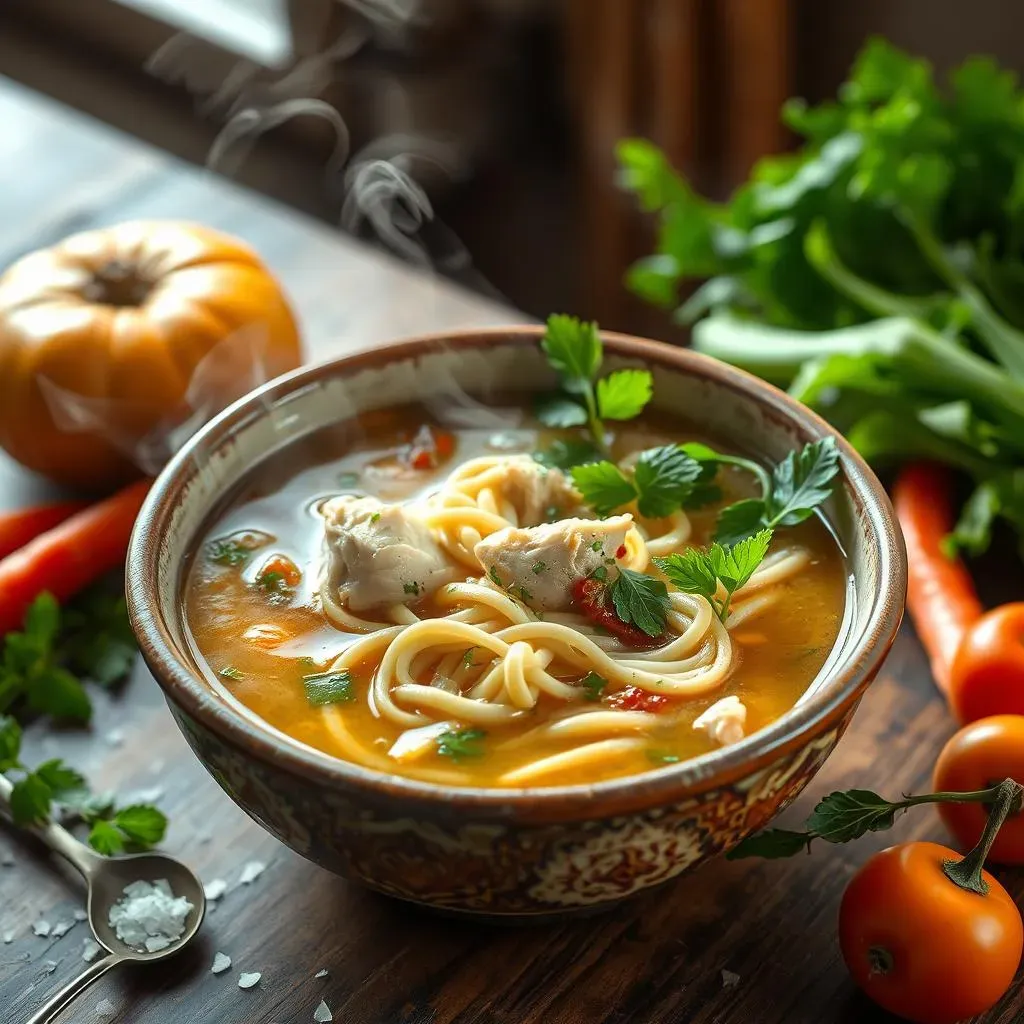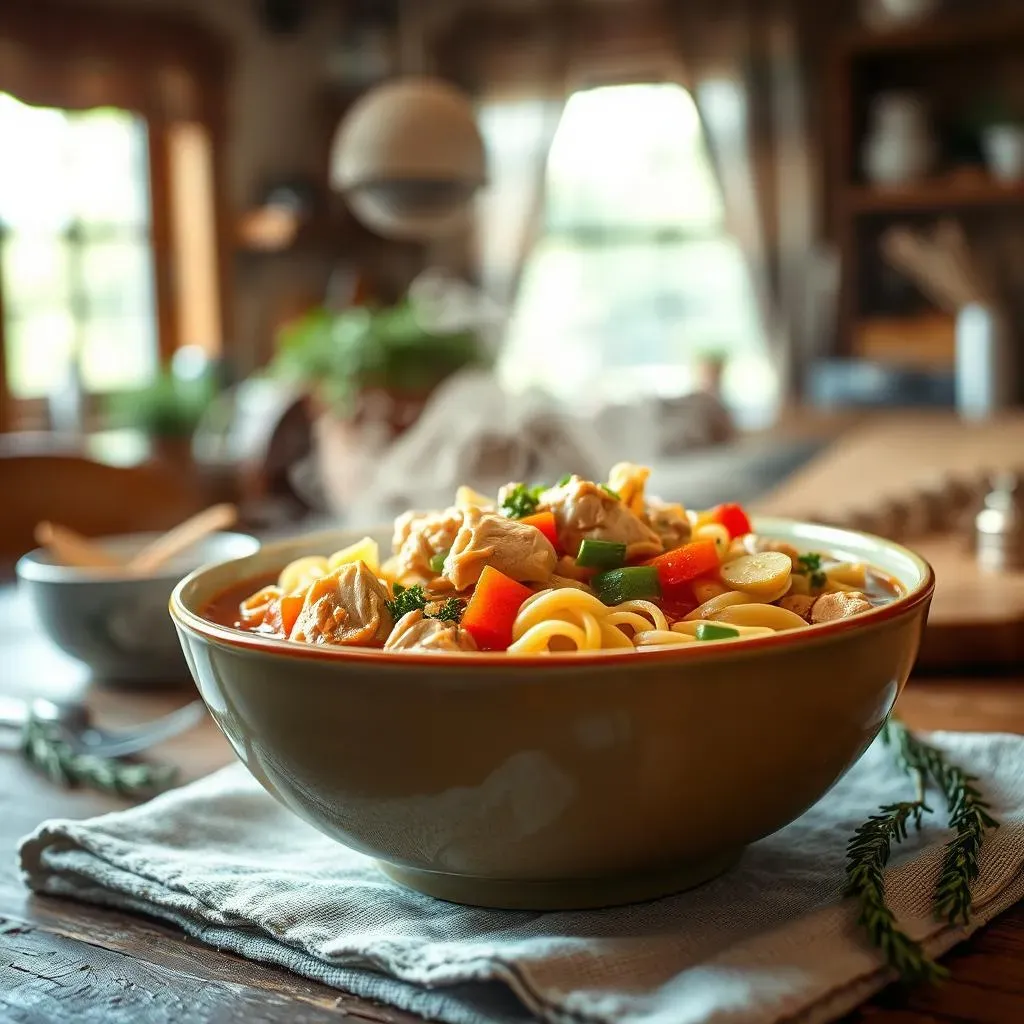Table of Contents
Are you looking for a comforting meal that also supports your health goals? Look no further! This article will guide you through creating the perfect chicken noodle soup for DASH diet. The DASH diet, known for its focus on lowering blood pressure and improving heart health, doesn't mean you have to sacrifice flavor. I'll show you how to make a delicious and satisfying chicken noodle soup that fits perfectly into the DASH eating plan. We'll explore what makes the DASH diet so effective, then we'll get into the kitchen to make a flavorful and heart-healthy soup. You'll learn about the key ingredients and the simple steps to create this meal. I'll also share some tips and tricks to customize your soup to your liking. By the end of this article, you'll have a go-to recipe for a warm, nourishing bowl of chicken noodle soup for DASH diet that’s both good for you and tastes great. Get ready to enjoy a guilt-free bowl of comfort!
Understanding the DASH Diet and Its Benefits

Understanding the DASH Diet and Its Benefits
What Exactly is the DASH Diet?
Okay, so you've heard about the DASH diet, but what is it really? It stands for Dietary Approaches to Stop Hypertension, which is a fancy way of saying it's a way of eating designed to help lower your blood pressure. It’s not some crazy fad diet, but rather a sensible, science-backed approach to eating healthier. Imagine it as a roadmap to better health, focusing on whole, unprocessed foods instead of restrictive rules. The diet encourages a good balance of fruits, vegetables, whole grains, lean proteins, and low-fat dairy.
Why is DASH So Good for You?
This isn't just about blood pressure, though that's a big part of it. The DASH diet is like a superhero for your heart. It’s packed with nutrients that not only help manage hypertension but also reduce the risk of heart disease, stroke, and even some types of cancer. It’s all about increasing the good stuff, like fiber, potassium, calcium, and magnesium, while keeping the bad stuff, like saturated fat, cholesterol, and sodium, to a minimum. It's not just about what you cut out, but what you add in - think of it as a delicious way to nourish your body.
Key Nutrients in the DASH Diet | Why They're Important |
|---|---|
Fiber | Helps with digestion and keeps you feeling full. |
Potassium | Helps regulate blood pressure. |
Calcium | Important for strong bones and teeth. |
Magnesium | Supports muscle and nerve function. |
The Long-Term Perks of DASH
The best thing about the DASH diet? It's not a quick fix; it's a lifestyle. It’s about creating habits that support your health for the long haul. When you embrace the DASH diet, you're not just managing blood pressure; you're investing in your overall well-being. I mean, who doesn't want more energy, better sleep, and a reduced risk of chronic diseases? This diet is a marathon, not a sprint, and the benefits will last a lifetime. It's all about making smart choices that add up to a healthier, happier you.
Making Delicious and Healthy Chicken Noodle Soup for DASH Diet

Making Delicious and Healthy Chicken Noodle Soup for DASH Diet
The Hearty Base: Building Flavor
Alright, let's get to the good part: making our chicken noodle soup! We're not just throwing ingredients in a pot. We're building layers of flavor, which is key, even when we're being health-conscious. It all starts with a good base. Don't skimp on the aromatics! We're talking about sautéing onions, garlic, and maybe some celery and carrots in a little olive oil. This isn't just about getting them soft, it's about coaxing out their flavors to create a foundation that’ll make your soup sing. Remember, low and slow is the name of the game here. Rushing this step will mean missing out on a lot of depth.
The Chicken and Broth: Choosing Wisely
Next up, the chicken and broth, the main characters of our soup. For the chicken, I prefer using boneless, skinless chicken breast or thighs. They’re lean and cook quickly, plus they shred easily once cooked. But if you have leftover cooked chicken, that works too, just add it in at the end. As for the broth, opt for a reduced-sodium chicken broth. Trust me, you'll be adding plenty of flavor on your own, so you can save some sodium here. It is important to read labels! Some broths can be surprisingly high in sodium, even the ones that say "low sodium". Also, if you are feeling adventurous, you can use homemade broth, that will add a wonderful taste.
Ingredient | Why It's Great | DASH Diet Friendly? |
|---|---|---|
Olive Oil | Healthy fats | Yes |
Onion, Garlic, Celery, Carrots | Flavor, fiber, nutrients | Yes |
Reduced-Sodium Chicken Broth | Flavor, hydration | Yes |
Chicken Breast or Thighs | Lean protein | Yes |
Whole Wheat Noodles | Fiber, complex carbs | Yes |
Fresh Parsley | Flavor, antioxidants | Yes |
Noodles and Finishing Touches
Now, let's talk noodles. We're not using just any noodles here. For the DASH diet, we are looking for fiber, so whole wheat noodles are the best choice. They add a nice texture and a bit more substance to the soup. Once the noodles are cooked, it's time for the final touches. Add your cooked chicken back into the pot, and sprinkle some fresh parsley on top. It’s not just for show, fresh herbs bring a brightness that elevates the whole dish. Give it a good stir, let it simmer for a few minutes, and you're ready to enjoy your delicious and healthy chicken noodle soup. Remember, the best recipes are those that make you feel good, and this one does exactly that!
Tips and Variations for Your DASH Diet Chicken Noodle Soup

Tips and Variations for Your DASH Diet Chicken Noodle Soup
Spice It Up: Adding Flavor Boosters
Okay, so you've got the basic chicken noodle soup down, but what if you're craving something a little different? That's where flavor boosters come in! Don't be afraid to experiment with herbs and spices. A pinch of dried thyme or rosemary can add a cozy, earthy note. If you like a little heat, try a dash of red pepper flakes. A bay leaf while simmering can also make a difference, just remember to take it out before serving. And for a bright, fresh flavor, a squeeze of lemon juice at the end is a game-changer. The goal is to make the soup your own, so play around and find what you love.
Remember, the DASH diet isn’t about bland food. It's about being smart with your choices. Using fresh herbs and spices is a great way to add flavor without adding extra salt. So, go ahead and raid your spice rack!
Veggie Variety: Adding More Goodness
Want to pack even more nutrients into your soup? Load it up with veggies! Think beyond the usual carrots and celery. Try adding some bell peppers for a sweet crunch, or some zucchini for a mild flavor. Spinach or kale are great additions too, they wilt down nicely and add a boost of vitamins. Mushrooms are a good way to add an earthy and meaty texture without adding meat. Don't be shy about mixing and matching based on what you have on hand. The beauty of soup is that it’s so versatile!
A colorful array of vegetables not only makes the soup more nutritious but also more appealing. Remember, we eat with our eyes first, so make your bowl look as good as it tastes.
Ingredient | Why It Works |
|---|---|
Thyme | Earthy flavor |
Red Pepper Flakes | A touch of heat |
Lemon Juice | Brightens the flavor |
Bell Peppers | Sweet, crunchy |
Zucchini | Mild, adds texture |
Spinach | Vitamins, wilts nicely |
Noodle Swaps and Other Twists
Okay, so maybe you're not a huge fan of whole wheat noodles, or you're just looking for something different. No problem! There are plenty of noodle swaps you can make. Try using brown rice or quinoa for a gluten-free option. Or, for a fun twist, try adding some spiralized veggies like zucchini or sweet potato noodles for an extra dose of vegetables. You could even use a different type of pasta, like a smaller shape that cooks quickly.
And here's a pro tip: if you find your soup is a bit thin, try adding a little bit of cornstarch mixed with cold water, this will help to thicken it up. Just stir it in slowly while your soup is simmering and let it cook for a few minutes. Remember, cooking is all about experimenting and making the dish your own.
